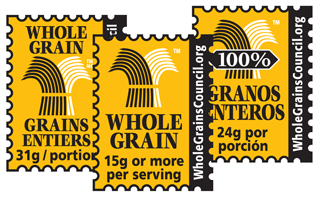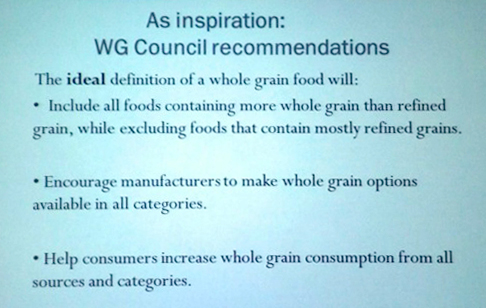Share This
Do you know what a whole grain food is? “Sure,” you may answer, without hesitation. “A side of brown rice, a slice of 100% whole wheat bread, a bowl of oatmeal – they’re all whole grain foods. It’s easy.”
It is, in fact, easy to identify simple 100% whole grain foods, especially those with short ingredient lists. I buy a tube of oatmeal, and the label has just one ingredient: oats. I fix a pot of quinoa from a bag with just one ingredient – quinoa – and have no doubts. Easy-peasy, this “whole grain food” thing.
Except when it’s not. Lots of foods on supermarket shelves contain a mix of whole grains and refined grains. Which ones contain enough whole grain to help your health? Some purists suggest we avoid that question by eating only foods that are 100% whole grain (meaning all the grains are whole grain); they see “hybrid” foods as somehow dishonest or misleading.
That’s letting the perfect become the enemy of the good, however. Hybrid foods help people unaccustomed to whole grains start on the road to appreciating whole grains’ fuller, nuttier taste. They also help manufacturers get “credit” for making incremental changes toward the better, in a world where an all-or-nothing, 100%-whole-grain-or-forget-about-it choice might simply mean manufacturers wouldn’t bother with expensive reformulations.
So hybrid products play a key role in incrementally moving consumers and manufacturers toward more whole grains. The Whole Grain Stamp helps shoppers figure out how much whole grain is in each food, but even though it’s now used on more than 9,200 products in 41 countries, thousands more whole-grain-containing products around the world don’t yet use the Stamp, leaving consumers guessing.
The problem of identifying whole grain foods is especially acute in Europe, where the Whole Grain Stamp is largely unknown, due to differences in regulatory procedures. The HealthGrain Forum, a respected consortium of European grain researchers working to support healthy grain products, has therefore embarked on the task of defining a whole grain food.
Researchers, it turns out, have just as much need for a clear definition of a whole grain food as consumers and manufacturers do. If Scientist A in Sweden and Scientist B in Italy each carry out a study of the benefits of eating whole grain foods, it’s impossible to compare their work if each one defined “a whole grain food” differently. So the drive for a consistent definition is important to everyone, everywhere.
Enter AACC International, a respected organization of cereal chemists, which last May published a “characterization” of a whole grain food as being one that contains at least 8 grams of whole grain for each 30 grams of product weight.
At first glance, this approach seemed sensible to many of us in the grains community. But on closer inspection, some serious unintended consequences of AACCI’s approach became apparent. The Whole Grains Council outlined these limitations in a letter to AACCI, and in a subsequent letter to the FDA.
You can read the details about our reservations – but basically, there are two problems: The AACCI approach would disqualify many foods where most or even all of the grain is whole grain – while allowing many foods made primarily with refined grain to be called “whole grain foods.”
Based on our detailed documentation of these serious limitations, the Communications Task Force of the HealthGrain Forum invited me to represent Oldways and the WGC in Vienna last week, to contribute to their deliberations about defining a whole grain food for Europe. The Task Force, under the able leadership of Jan-Willem van der Kamp, had a spirited and productive discussion about this important topic. And it seems that our input was helpful; the Task Force’s summary report the following day described the WGC recommendations as “an inspiration” — as this PowerPoint slide illustrates.
We look forward to contributing to the HealthGrain Forum Communications Task Force as they continue to refine their whole grain food definition over the coming months. What fun to help make a difference in the world of whole grains – and to do it in a lovely place like Vienna.
How do you think a “whole grain food” should be defined? Add your comments here on the WGC blog, or weigh in on the Oldways Whole Grains Forum. (Cynthia)



Add a Comment